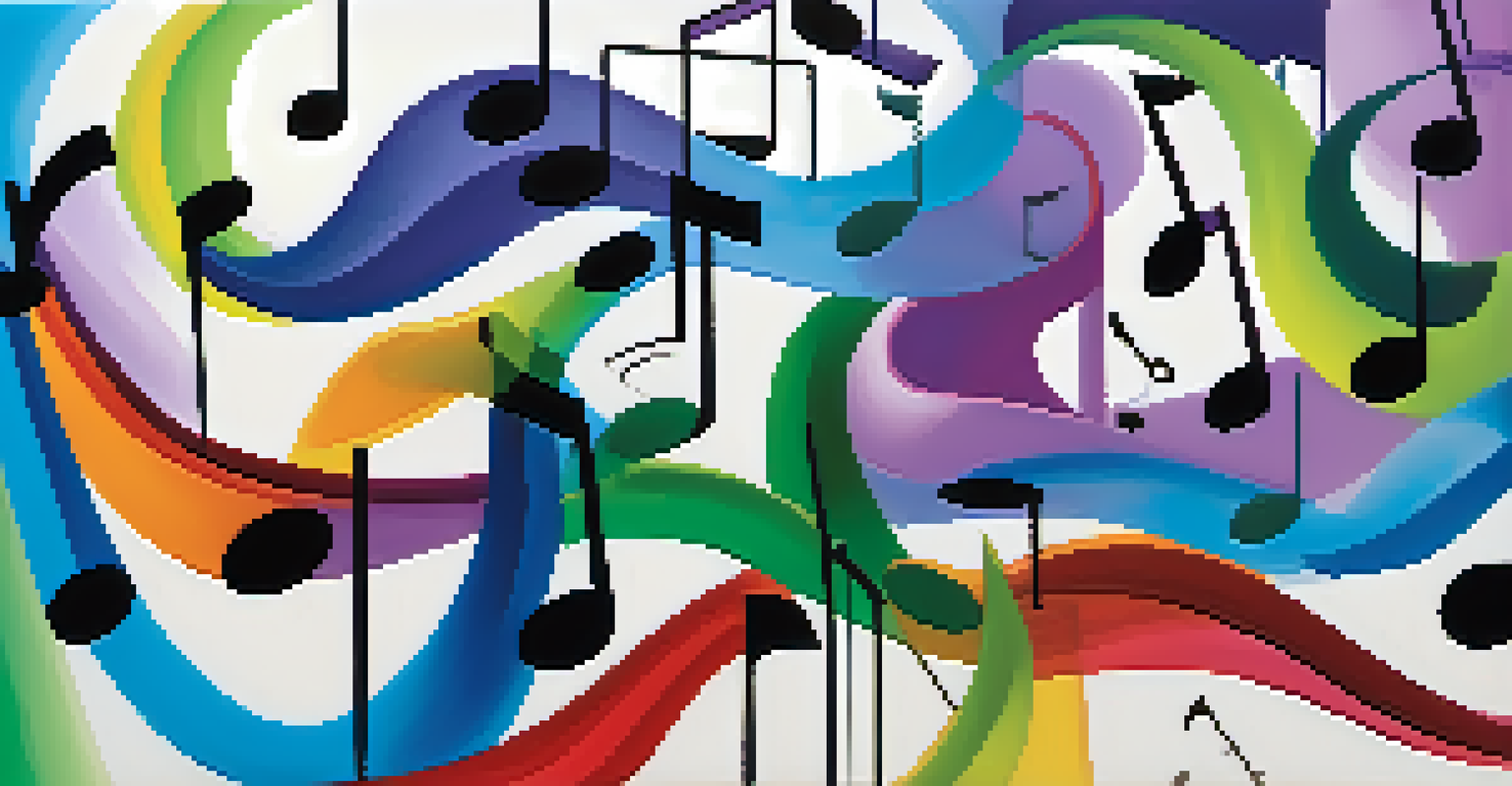Melodic Minor Scale: Patterns and Guitar Applications

Understanding the Melodic Minor Scale Basics
The melodic minor scale is a fascinating aspect of music theory, often used in jazz and classical genres. Unlike the natural minor scale, which has a more somber tone, the melodic minor introduces a unique twist by raising the sixth and seventh degrees when ascending. This creates a sound that's both intriguing and versatile, perfect for guitarists looking to expand their musical palette.
The only truth is music.
To illustrate, if you take the A natural minor scale (A, B, C, D, E, F, G) and raise the sixth (F#) and seventh (G#) notes, you get the A melodic minor scale (A, B, C, D, E, F#, G#). This alteration gives the scale a more uplifting and sophisticated character, making it a favorite among musicians.
Ultimately, understanding the basic structure of the melodic minor scale sets the stage for delving into its patterns and applications, which can significantly enhance your guitar playing.
Common Melodic Minor Scale Patterns for Guitar
When it comes to practicing the melodic minor scale on guitar, utilizing specific patterns can be incredibly beneficial. One common approach is to practice the scale in thirds, which involves playing every other note. For example, from A to C and then B to D, and so on. This method not only helps with finger dexterity but also enhances your ear for harmony.

Another effective pattern is the four-note sequence, where you play four consecutive notes of the scale before moving to the next starting note. This technique can be particularly useful for improvisation as it allows you to create flowing lines while emphasizing the unique sound of the melodic minor scale.
Melodic Minor Scale Basics
The melodic minor scale enriches music by raising the sixth and seventh degrees, offering a unique sound compared to the natural minor scale.
Incorporating these patterns into your daily practice routine will not only make the scale feel more familiar but also provide you with a solid foundation for creating melodic phrases.
Applying the Melodic Minor Scale in Improvisation
One of the most exciting applications of the melodic minor scale is in improvisation. Guitarists often use this scale over dominant chords, especially in jazz settings, because of its rich harmonic possibilities. For instance, if you're jamming over a G7 chord, using the A melodic minor scale can create tension and resolution that really captivates the listener.
Music is the shorthand of emotion.
This scale's unique intervals allow for the inclusion of altered tones, such as flat ninths or sharp elevenths, which can add complexity to your solos. By focusing on these tensions, you can create a more expressive and engaging improvisational style.
Remember, the key to effective improvisation is not just knowing the scale but also feeling how it interacts with the chords you're playing over. Experimenting with the melodic minor scale in various contexts will help you discover its full potential.
Exploring Melodic Minor Modes on Guitar
The melodic minor scale itself is just the beginning; it has seven modes that each offer unique flavors for guitarists. For instance, the Dorian b2 mode derived from the melodic minor scale features a flat second degree, giving it a distinct sound often used in modern jazz and fusion genres. Understanding these modes can greatly expand your improvisational vocabulary.
Another interesting mode is the Lydian dominant, which can evoke a dreamy, yet slightly dissonant feel. When practiced on the guitar, these modes can be applied to various chord progressions, allowing for greater creative expression in your playing.
Improvisation with Melodic Minor
Guitarists often use the melodic minor scale over dominant chords in jazz to create captivating tension and resolution in their solos.
Exploring these modes not only helps you understand the melodic minor scale more deeply but also provides you with a wealth of material to draw from in your performances.
Melodic Minor Scale and Chord Progressions
Integrating the melodic minor scale into your chord progressions can create a rich harmonic landscape. For example, using the A melodic minor scale over an A minor 7 chord can add depth and complexity to your chord voicings. This approach enables you to explore different textures and colors in your music, making your compositions stand out.
Experimenting with different chord types, like minor 7 or dominant chords, while utilizing the melodic minor scale can result in unique harmonic combinations. For instance, pairing a minor 7 chord with the melodic minor scale can yield an emotionally charged soundscape, perfect for ballads or introspective pieces.
By recognizing how the melodic minor scale interacts with various chord progressions, you can enhance your songwriting and improvisational skills, leading to more dynamic and engaging music.
Techniques for Mastering the Melodic Minor Scale
To truly master the melodic minor scale on guitar, it's essential to incorporate various techniques into your practice. One effective method is to use alternate picking, which not only improves your speed but also helps develop a smooth, fluid playing style. Consistent practice with this technique will enable you to navigate the scale more efficiently.
Additionally, incorporating legato playing can add a beautiful, flowing quality to your melodies. This technique involves using hammer-ons and pull-offs to create a seamless connection between notes, making your solos sound more expressive and sophisticated.
Exploring Melodic Minor Modes
The seven modes derived from the melodic minor scale provide guitarists with diverse flavors and enhance their improvisational vocabulary.
By combining these techniques with the melodic minor scale, you'll find that your overall guitar playing improves, allowing you to tackle more complex musical ideas with confidence.
Real-World Examples of the Melodic Minor Scale
Many renowned guitarists have effectively utilized the melodic minor scale in their music, providing great learning examples for us. For instance, jazz guitarist John Scofield often employs the scale in his improvisations, showcasing its versatility and emotional depth. Listening to his work can offer insights into how to creatively approach the scale in various musical contexts.
Another notable example is the rock guitarist Steve Vai, who frequently incorporates the melodic minor scale into his solos, demonstrating its potential for creating dramatic and intricate phrases. Analyzing his solos can inspire you to experiment with your own ideas and develop a unique playing style.

By studying these artists and their use of the melodic minor scale, you can gain valuable insights that will enhance your own guitar skills and inspire your musical journey.